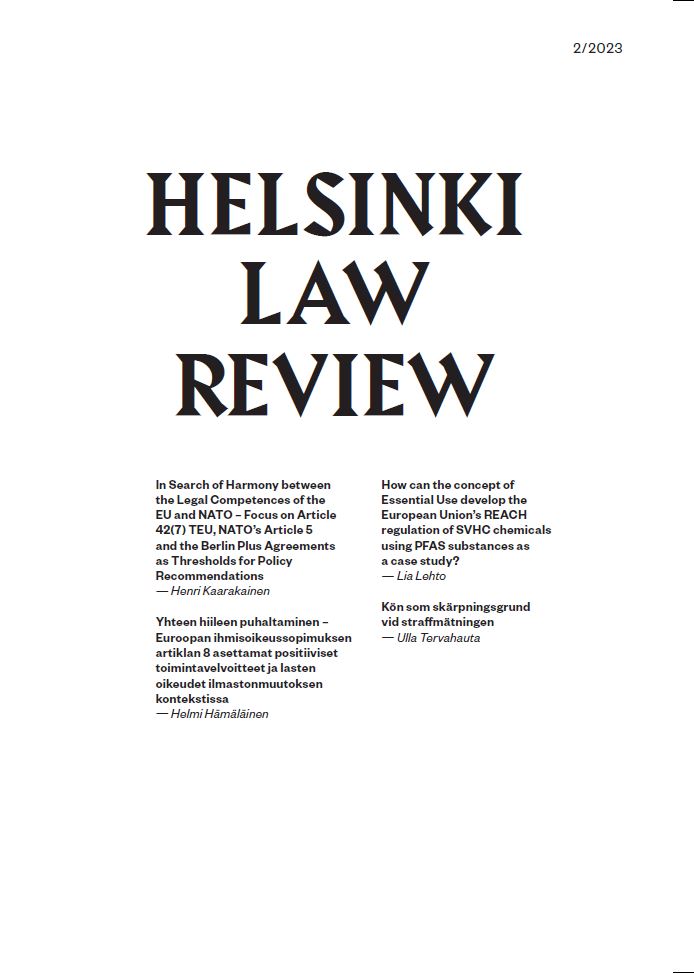Kön som skärpningsgrund vid straffmätningen
DOI:
https://doi.org/10.33344/vol17iss2pp82-98Avainsanat:
rangaistuksen koventamisperusteet, sukupuoli, viharikosAbstrakti
In this article I examine the recent addition to the Finnish penal code, namely, that a crime that has the victim’s gender as its motivation may be taken as grounds for increasing the severity of the punishment. Chapter six section five of the Finnish penal code names grounds for increasing the severity of the punishment. The fourth point of section five subsection one initially included only racist motives, but it has eventually broadened to cover a wider range of hate crimes. Examination of motivations provided for the addition – the word “gender” in the list of aggravating circumstances
– reveals ambiguity. Although gender is a broad concept, the Finnish legislator chose a narrow definition: in the government proposition, the term primarily refers to men and women. The legislator’s reasoning focuses on hate crime directed at women acting in the public sphere, such as politicians, journalists, and academics. Comparison with wordings and motivations in the corresponding sections of the Swedish and Danish penal codes reveals a significant difference:
in Sweden and Denmark the emphasis is on the protection of sexual and gender minorities.



